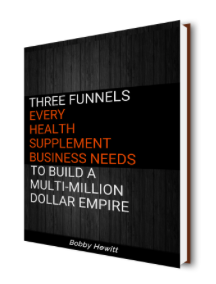To see what’s working in supplement advertising that includes advanced tactics and strategies not covered in this article click here.
Dietary supplements are not a very exciting product.
One supplement bottle tends to look a lot like the other.
Which makes finding supplement advertising examples quite challenging.
In addition, dietary supplements are in a highly competitive industry.
This makes it imperative for health supplement brands to constantly come up with new angles for their advertising and marketing campaigns.
Here’s a supplement advertising example from Bramhults.
A Swedish premium juice brand known for it’s fruit and vegetable juices.
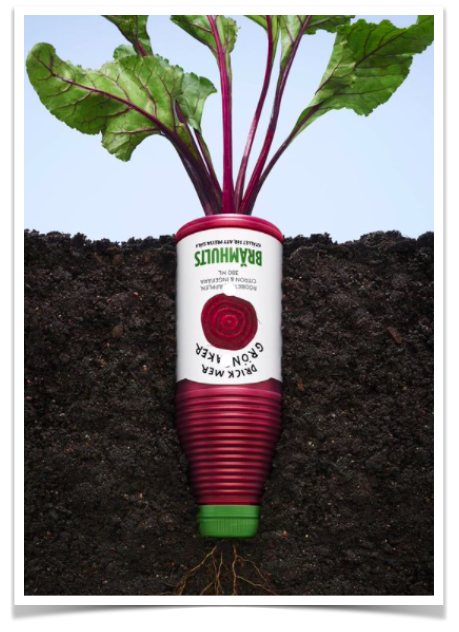
Although this is not a bottle of capsules, it is still in the dietary supplement, functional food and personal care category of advertising.
It’s clever. It’s smart. And gets you to stop and look.
But would it get you to buy?
If you’re at WholeFoods and see this ad while browsing the isles, maybe.
But would you buy this, if you were browsing the web?
Probably not.
Why?
Because this supplement advertising example lacks selling power.
Sure you get the concept. The drink is pure beet juice. It’s as fresh and unaltered as if picked right from the ground.
And the advertising idea is very creative.
But it does nothing to counter objections, or address the benefits. Or even tap into trust, belief, desire or hope.
All of the things that matter in supplement advertising.
Because those are the things that get a prospect to buy a vitamin supplement.
Supplement Advertising Examples That Nudge People to Buy
Brand advertising is one thing but if you want people to buy, you’ll need to switch from brand advertising to direct response advertising.
Direct response advertising gets an immediate response or sale.
Brand advertising is not meant to get a sale today but rather just impact how you feel about the brand. So that maybe you’ll get a sale sometime down the road.
Let’s take a look at some direct response examples.
Here’s one direct response advertising example, with the goal of generating a direct sale, that uses comparison.
Comparison is a powerful way to stand out above the competition.
This example below shows how this supplement brand is different.
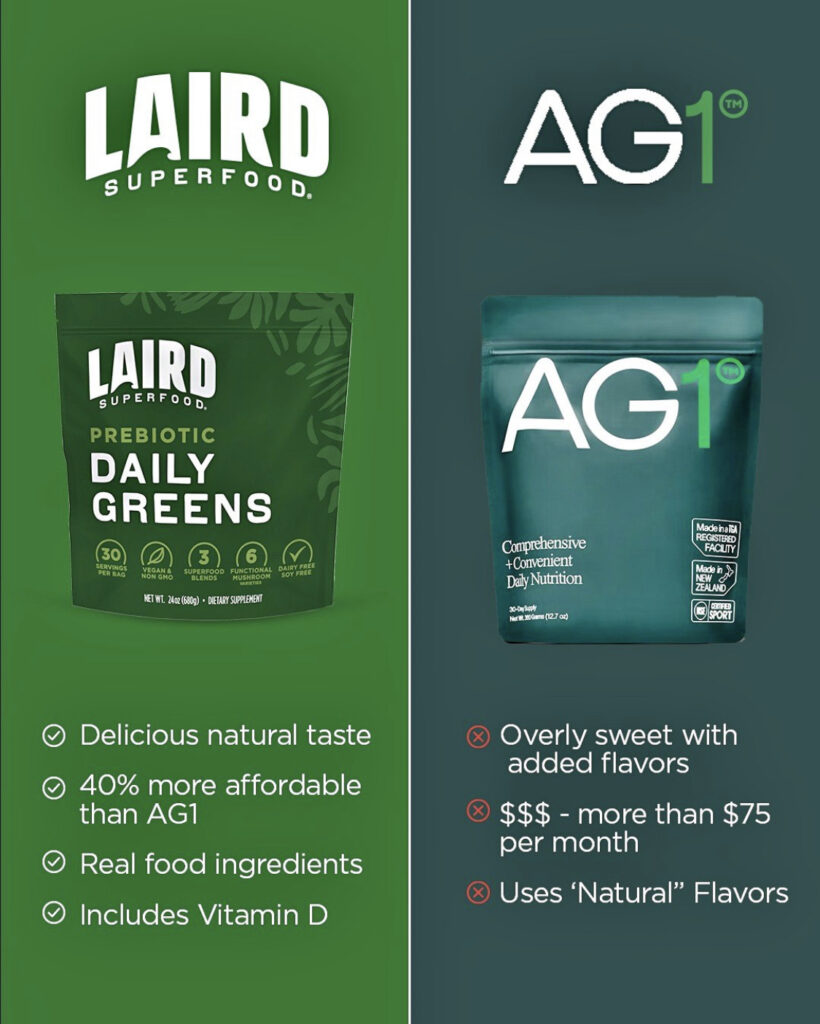
The points of differentiation in the supplement advertising example above are all feature based points of differentiation.
The advertising brand on the left is competing against natural vs. overly sweetened, as well as directly on price.
Here’s another example.
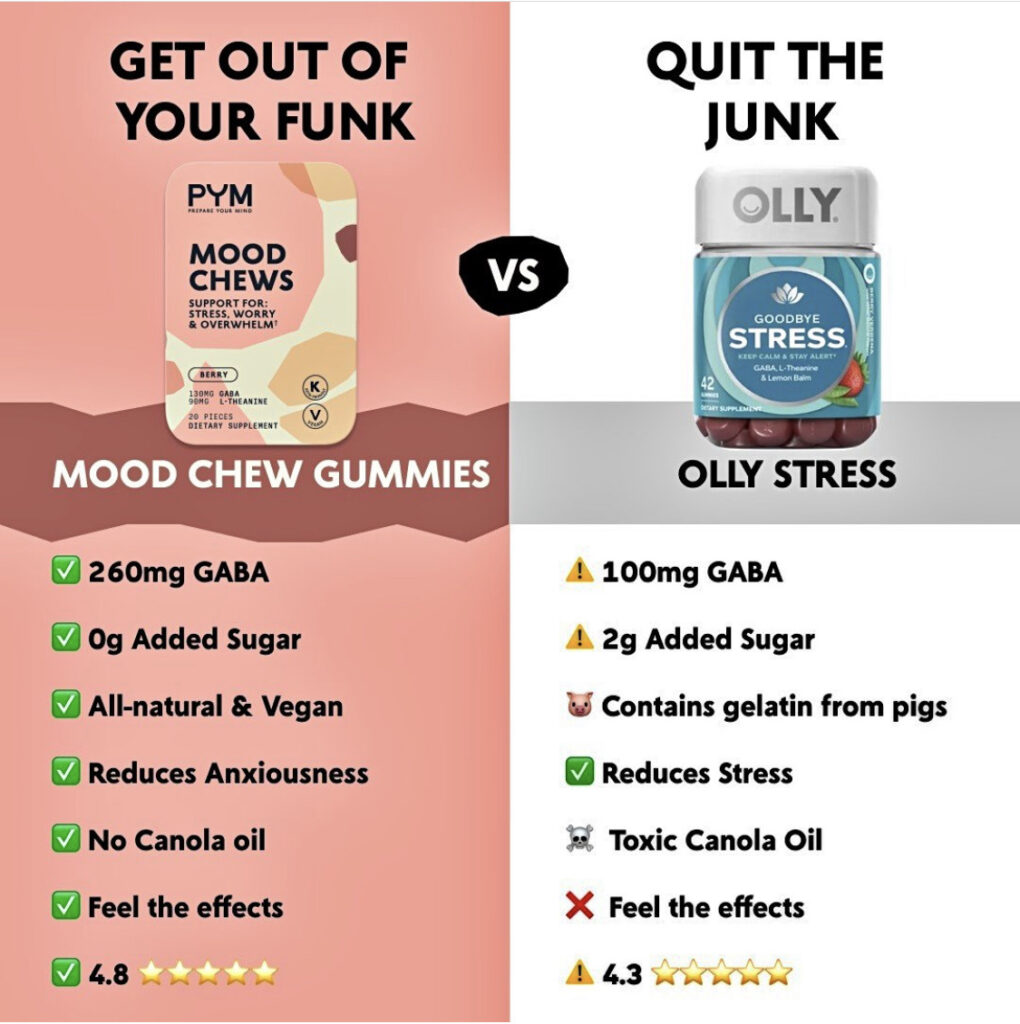
Like the previous example PYM on the left is competing against feature based points of differentiation. Like zero sugar vs. 2grams of sugar. But this one also adds some benefits like reduces anxiousness. And even the amount of reviews that have compared to the competitor.
You can compare your supplement against the competition across a variety of differentiating points.
But you should also take note that the same style of ad. Left side vs. right side and comparison is used over and over again. You’ll see a lot more of this ad style later in this article.
The best supplement advertising examples are the ones that you see over and over again.
Marketers know that when you start to see the same ad concept, multiple times or if an ad has been running for a long time, that’s a sign that it’s working.
See What Else is Working in Supplement Ads.
Don’t reinvent the wheel. See what ads your other supplement brands are using to scale their supplement business. Click here to learn more.
Here are several supplement advertising examples that use this same comparison strategy.
Notice how in each example, the dimension of comparison is different.
In this example, we see comparison of benefits across time but the twist is the comparison is against itself.
On the left is what you’ll experience after taking the product for 1 day and on the right is after 30 days.
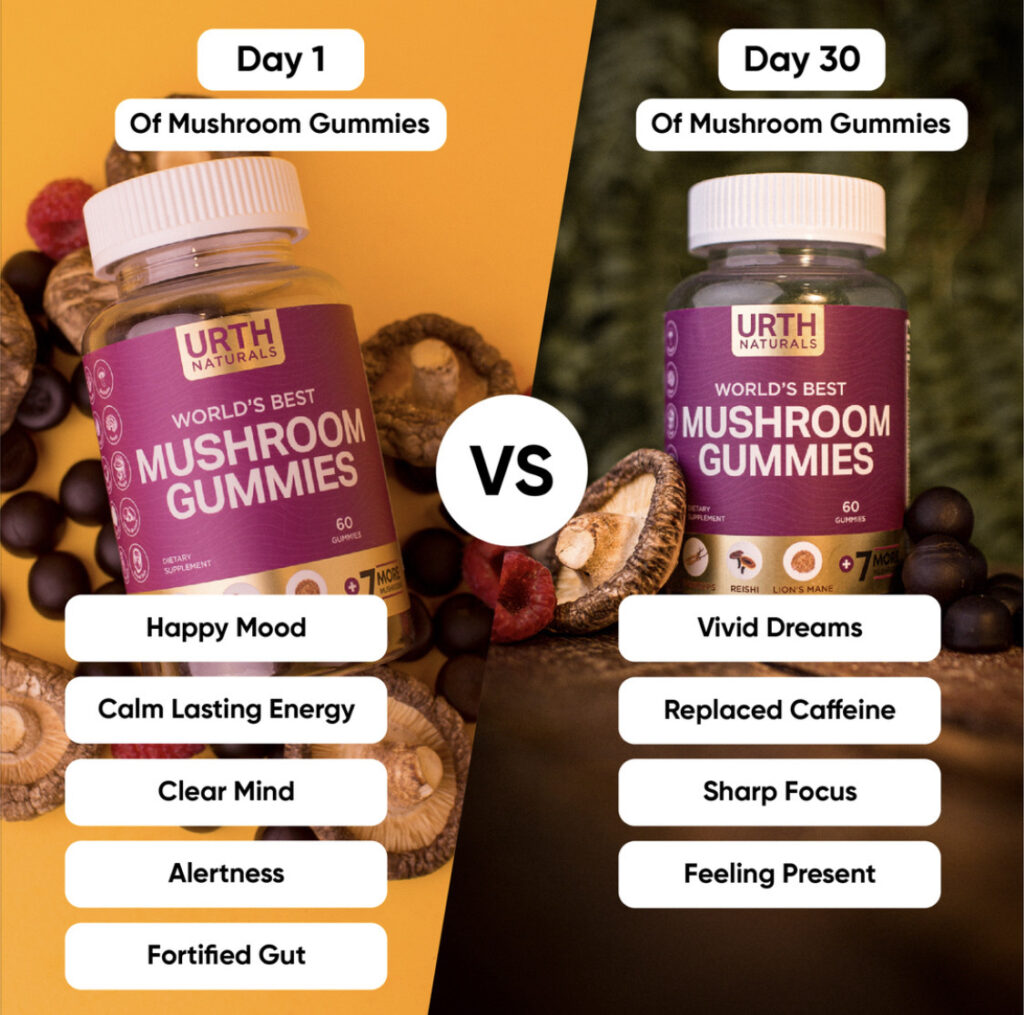
Below we see a similar example comparing the experience or benefits of taking the product after 30 days.
But in this example the advertiser starts at day zero and compares it to day 30. This elevated the comparison to a before and after frame.
They even use a black and white image for the before day zero state to visually emphasize the transformation.
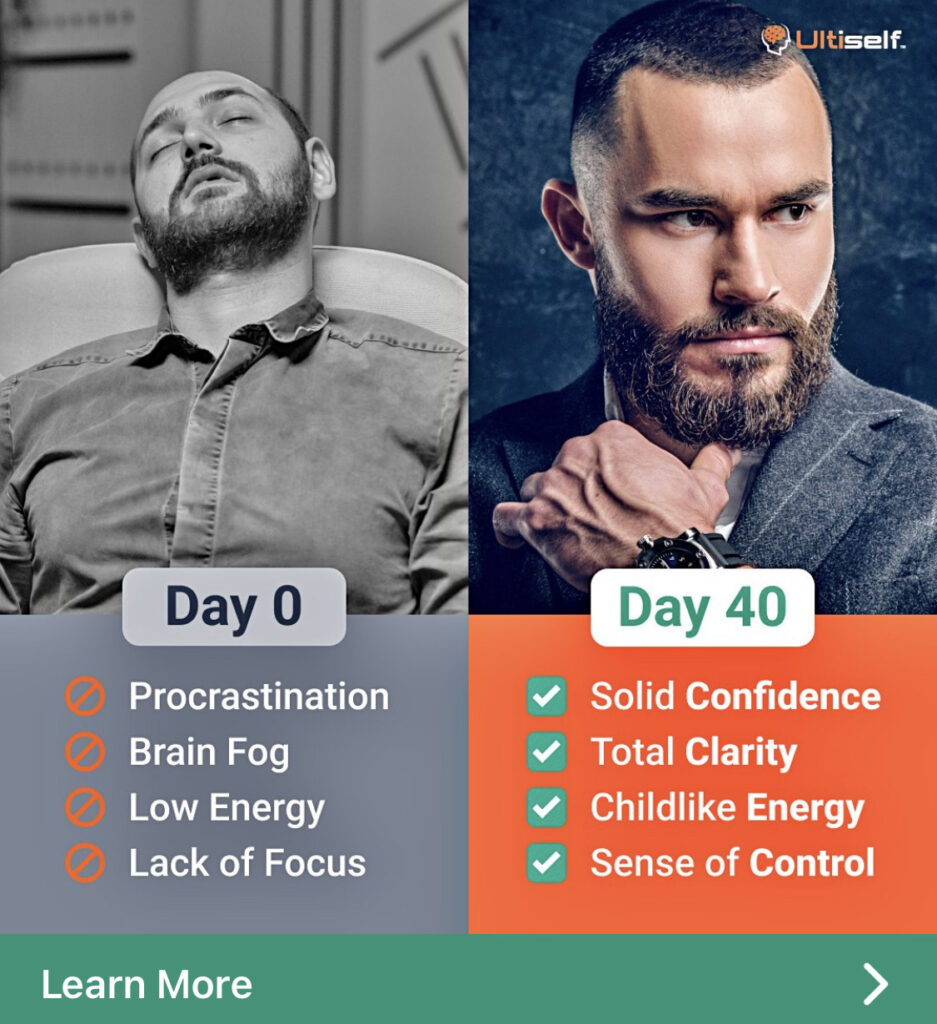
Want even more supplement advertising examples? Click here to learn more.
The Marketing Psychology Behind Comparative Advertising
Creating desire for a supplement is really quite a difficult task.
But creating desire by comparing it to something else taps into several aspects of human nature that make it a bit easier.
Comparison is a short cut for the human brain.
By comparing two things against each other it becomes really clear as to how they are different.
And pointing out how something is different helps us make a choice.
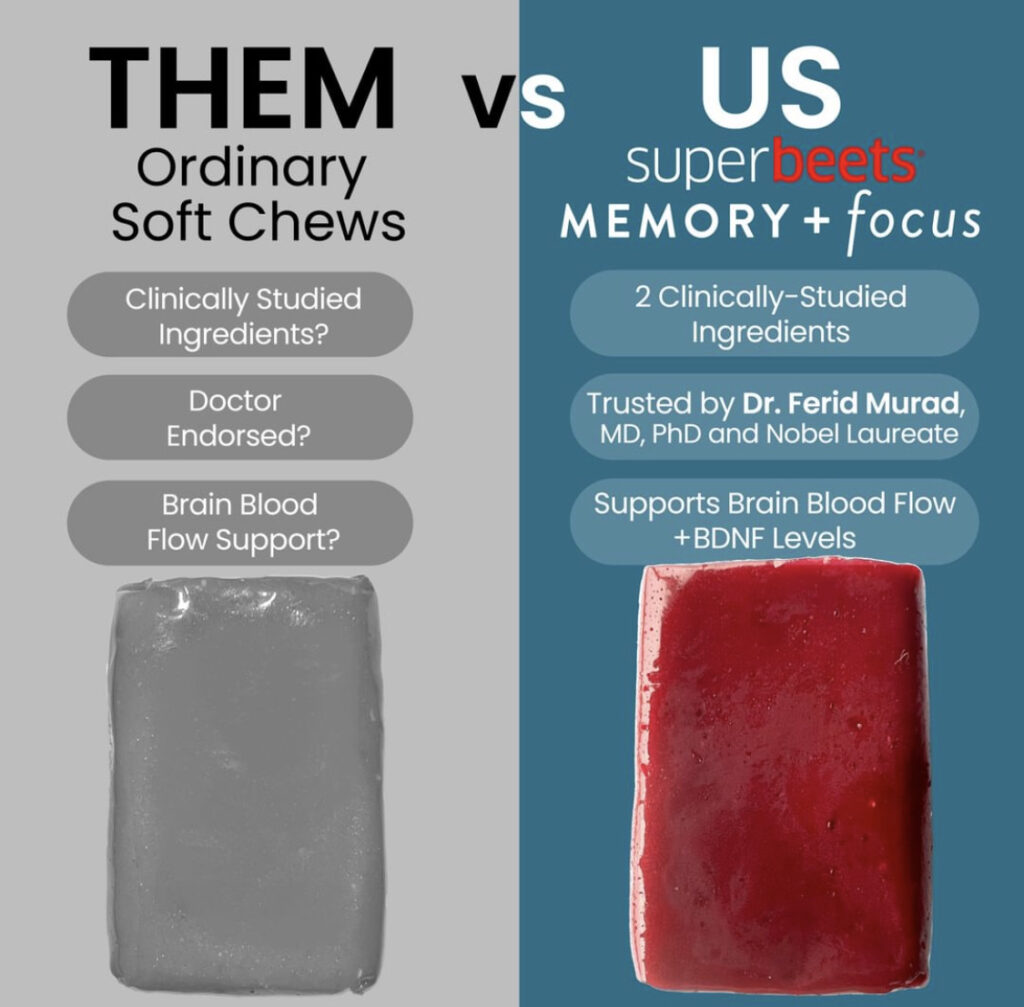
Here are a few ways comparative advertising does this.
Differentiation: Comparative advertising helps your brand differentiate itself from competitors by highlighting unique selling points and benefits that set your supplement apart.
Proof of Superiority: Consumers are drawn to products that prove their superiority with concrete evidence. Claims like “faster results,” “clinically proven,” or “outperforming competitors” appeal to their desire for the outcome they seek.
Validation and Trust: When you provide evidence of why your supplement is better, you’re validating the consumer’s decision to consider your supplement brand. This validation fosters trust.
Aspiration and Upgrade: The idea of upgrading to a “premium” or “quality” product triggers aspirational desire. People want the best for themselves, and positioning your supplement advertisement as an upgrade caters to this need.
Exclusivity: Implying that competitors are “ordinary” or “imitations” creates a sense of exclusivity around your brand. Consumers like to feel they’re choosing something special.
Peer Influence: Highlighting that others prefer your brand over competitors taps into social proof. People often make choices based on what others are doing, as it provides a sense of safety in numbers.
Customer Loyalty: Demonstrating a loyal customer base reinforces the notion that your brand is trustworthy and offers value. People are more likely to choose brands that have a strong following.
Once you’ve decided which psychological comparison trigger you’ll test in your advertisements it’s time to amplify it.
How to Amplify The Effectiveness Of Comparative Advertisements and Why They Work
Each of these supplement advertising examples below use a different angle.
Each angle could be an ad in and of itself.
However, I recommend sticking to only one angle per ad to A/B test which one performs best for you.
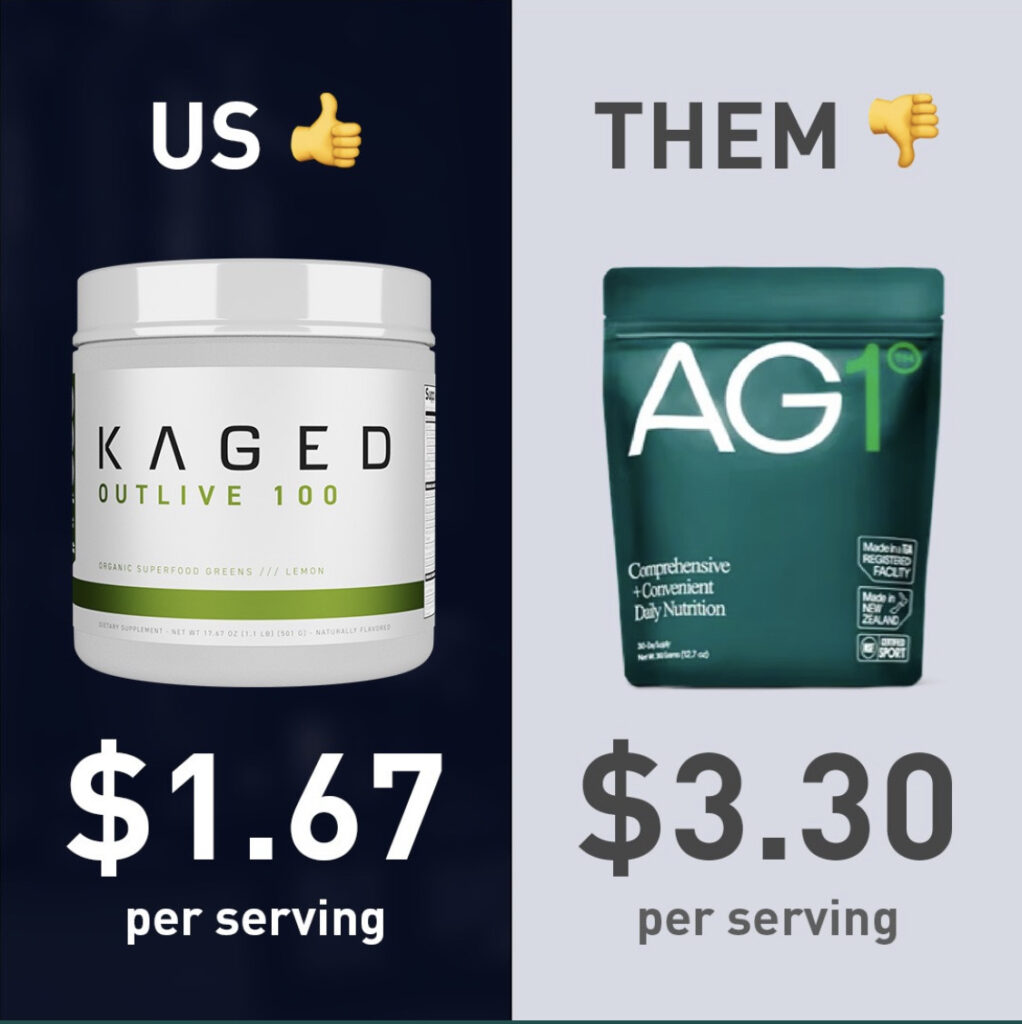
Here are a few examples for amplifying the comparison angle in your ads.
Example 1:
“Why Choose Us? Our Advanced Formula Delivers 30% Faster Results!”
Why it works: This statement directly addresses the consumer’s choice by emphasizing “us” as the preferred option. The numerical value of “30% faster results” appeals to the desire for quick and efficient outcomes.
Example 2:
“The Science Behind Our Supplement: Clinically Proven to Outperform Leading Competitors”
Why it works: Highlighting the “science behind” your product taps into the credibility of research. The claim of “clinically proven” superiority establishes trust, while “outperforming leading competitors” establishes your brand’s dominance.
Example 3:
“Ditch the Ordinary: Upgrade to Our Premium Supplement for Unmatched Quality”
Why it works: This statement frames competing products as “ordinary” and positions yours as a “premium” option. The use of “unmatched quality” appeals to the consumer’s desire for the best possible product.
Example 4:
“Real Results, No Gimmicks: Choose Our Trusted Brand Over Imitations”
Why it works: The use of “real results” and “trusted brand” reinforces authenticity and reliability. Positioning competitors as “imitations” fosters a sense of exclusivity and sets your brand apart.
Example 5:
“Customer Loyalty Speaks Volumes: Join Thousands Who Prefer Us Over [Competitor]”
Why it works: This statement leverages social proof and the herd mentality. The idea that “thousands” prefer your brand establishes credibility and creates a sense of belonging.
Of course if you can’t make any of the claims in the examples above then you shouldn’t use them.
These examples are just meant to get you thinking. Then you have to get creative.
And one way to do that is to…
Highlight Your Products Benefit, Plus Gain Your Prospect Trust
You may have noticed each of the example images at the beginning used benefits as comparison.
The way to gain your prospect’s trust and make the sale is to align the benefits with the specific needs and desires of your target audience.
To maximize impact, focus on gaining your prospects’ trust through transparent communication and relatable messaging.
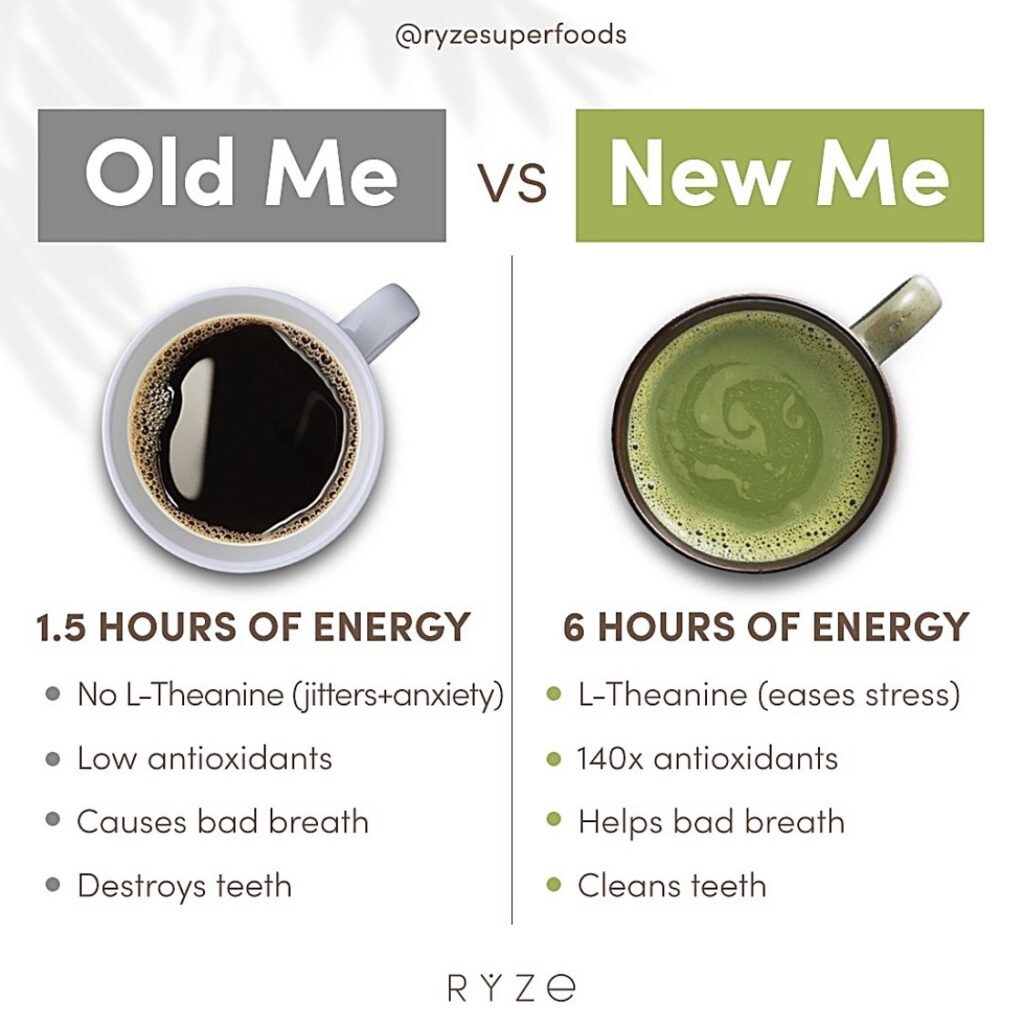
Here are some examples of effective benefits that highlight trust building.
Example 1:
“Experience Lasting Joint Relief: Our Proven Formula Enhances Mobility and Eases Discomfort”
Why it works: By emphasizing “lasting” relief and “proven formula,” this message speaks to consumers who have struggled with joint discomfort. The use of “enhances mobility” addresses a key benefit, while “proven” instills trust in the product’s efficacy.
Example 2:
“Support Immune Health Naturally: Our Ingredients are Backed by Years of Research and Customer Satisfaction”
Why it works: The combination of “support immune health naturally” taps into current health trends. Mentioning “years of research” signals a commitment to quality, while “customer satisfaction” reinforces trust through social proof.
Example 3:
“Achieve Mental Clarity: Our Blend of Brain-Boosting Ingredients Has Garnered Rave Reviews”
Why it works: Addressing the desire for “mental clarity” resonates with those seeking cognitive enhancement. The use of “brain-boosting ingredients” and “rave reviews” builds credibility and social validation.
Example 4:
“Fuel Your Workouts: Our Pre-Workout Supplement is Trusted by Fitness Enthusiasts Worldwide”
Why it works: The term “fuel” resonates with active individuals looking for energy. “Trusted by fitness enthusiasts worldwide” taps into the aspirational desire to align with a successful community.
Example 5:
“Restore Natural Sleep: Our Calming Formula Is Non-Habit Forming and Clinically Proven Effective”
Why it works: Highlighting “restore natural sleep” targets those with sleep issues. Mentioning “non-habit forming” addresses concerns about dependency, and “clinically proven effective” builds trust in the product’s claims.
What to Discover More Insider Supplement Ad Secrets?
Get the proven frameworks and strategies that your competitors are using in their advertisements and use them yourself. Click here it’s only $7.
The Marketing Psychology Behind Product Benefits and Trust-Building
Tapping into desire with comparative advertising that uses benefits is great for building trust.
But why does it work?
Yes, because it taps into core principles of marketing and advertising.
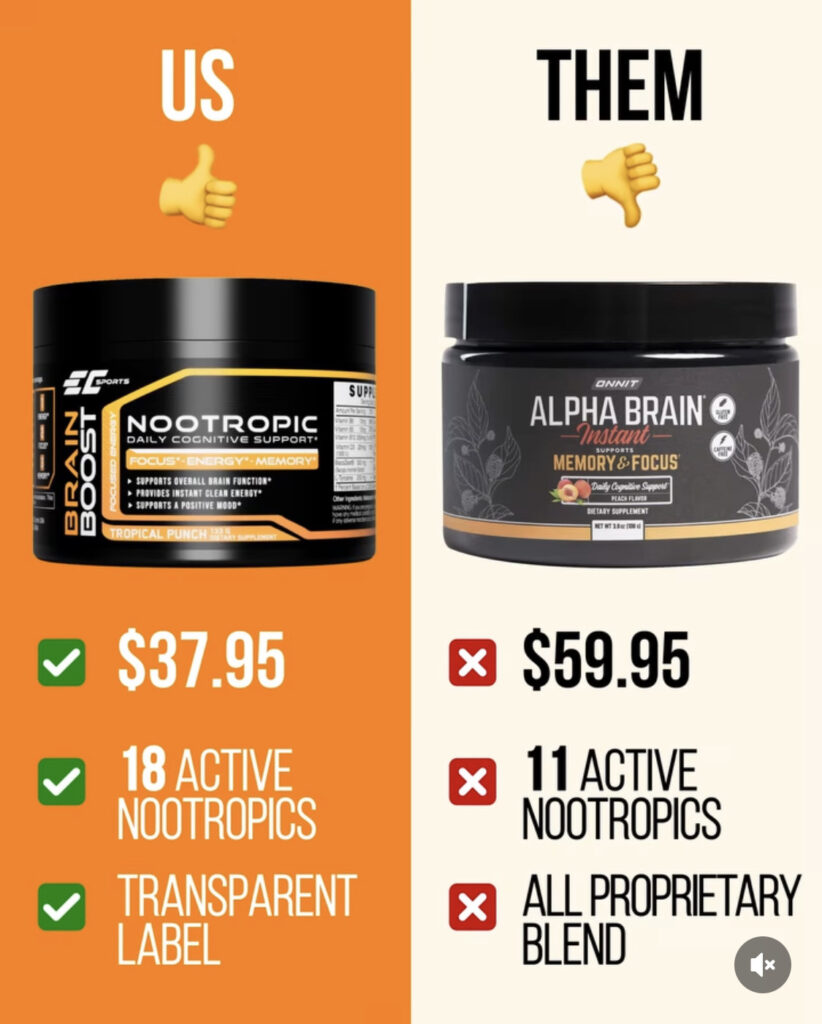
Let’s go over those principles below:
Principle 1:
Needs and Desires: Effective benefit highlighting taps into consumers’ needs and desires. People are more likely to engage with advertising that promises solutions to their specific problems.
Principle 2:
Solutions with Evidence: Consumers are skeptical about exaggerated claims. When you back your benefits with evidence, such as “proven formula,” “years of research,” or “clinically proven,” you’re providing a concrete reason for prospects to trust your claims.
Principle 3:
Social Proof: Including customer testimonials or mentioning “rave reviews” creates a sense of social validation. People tend to trust products that have been endorsed by others like them.
Principle 4:
Transparency: Advertising that your supplement is “non-habit forming” or “natural” addresses concerns consumers might have about negative side effects. Transparency builds trust by addressing potential objections.
Principle 5:
Expertise and Authority: When you emphasize “trusted by fitness enthusiasts worldwide,” you’re positioning your brand as an authority in the field. People often look to experts for guidance.
Principle 6:
Relatability: Using language that resonates with the audience’s desires, such as “lasting joint relief” or “natural sleep,” creates a bit of comfort with what the prospect wants. People are more likely to engage when they feel understood.
Principle 7:
Confidence and Assurance: Effective benefit highlighting assures prospects that their needs will be met. This assurance instills confidence and increases the likelihood of them taking action.
Principle 8:
Personalization: Framing benefits in a way that makes the prospect feel as if the product was designed specifically for them taps into the human desire for personalized solutions.
By aligning the benefits of your supplement with the specific needs and desires of your target audience and by providing evidence, transparency, and relatable messaging, you’re not only making a compelling case for your product but also addressing the psychological factors that influence consumer decision-making.
This approach builds trust and increases the chances of prospects engaging with your advertisement.
But what about the copy outside of the ad image?
This is especially important if you’re advertising your supplement brand on Meta.
The copy outside of the ad image, includes the words above the ad image.
The most important bit of copy is the headline of the advertisement.
How to Write Clear and Concise Headlines That Communicate the Main Value Proposition
In the world of online advertising, attention spans are limited, and the competition for capturing a user’s interest is fierce.
A clear and concise headline serves as the gateway to your supplement advertisement, conveying the essence of your product’s value proposition in a matter of seconds.
Crafting such headlines requires a deep understanding of marketing psychology and the art of persuasion.
My Supplement Ads Blueprint is The Shortcut.
Go inside supplement ads and see more supplement ad examples that work. Plus understand why they are working so you can use the same principles in your advertising. Click here to learn more.
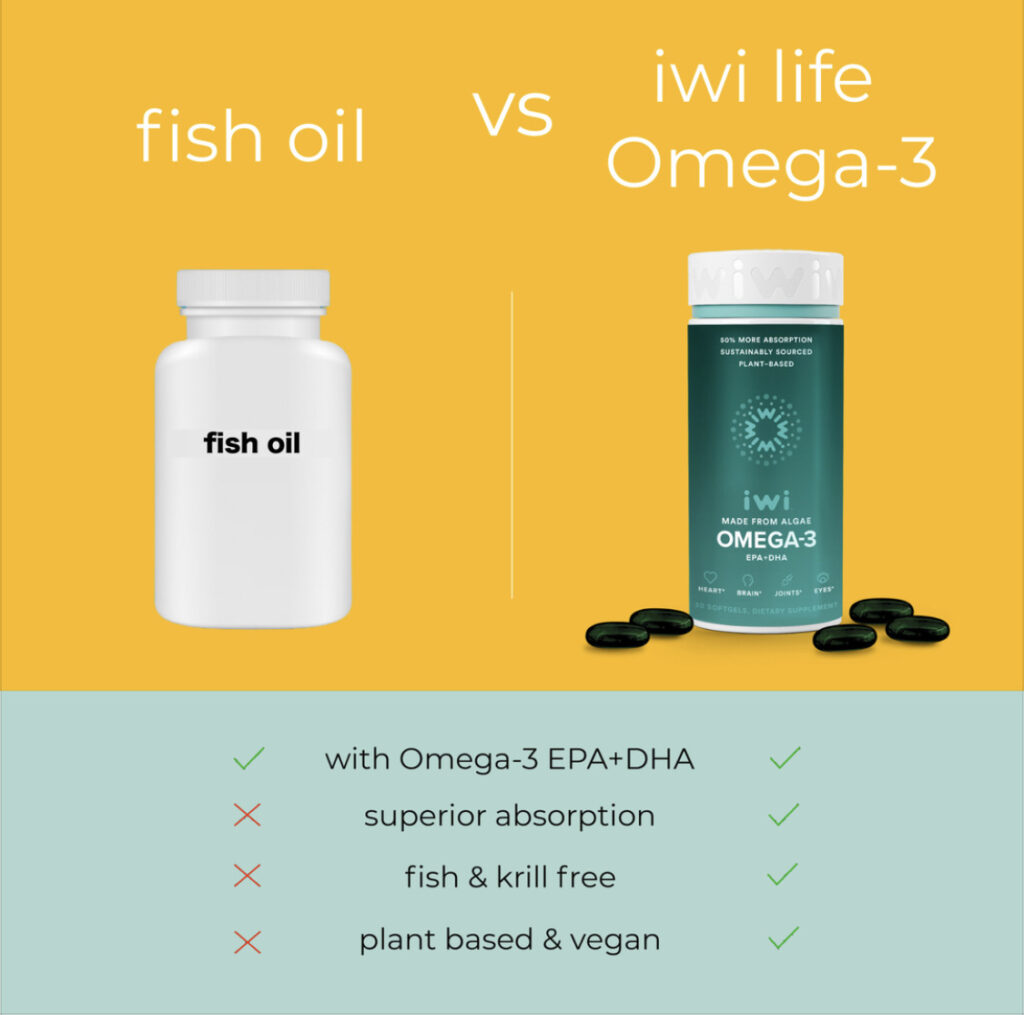
Examples of Effective Headlines and Why They Work
Headline Example 1:
“Unlock Boundless Energy: Experience the Power of Our Natural Boost Supplement!”
Why it works: This headline taps into the desire for increased energy levels, using power words like “unlock” and “boundless.” It communicates a specific benefit (energy) and introduces the product as a solution (“natural boost supplement”).
Headline Example 2:
“Revitalize Your Skin: Discover the Secret to Radiant Glow with our Collagen Formula”
Why it works: The headline promises a transformation (“radiant glow”) and hints at exclusivity by mentioning a “secret.” It plays into the aspiration for youthful and vibrant skin.
Headline Example 3:
“Elevate Your Performance: Unleash Peak Potential with Our Performance-Enhancing Blend”
Why it works: This headline triggers a sense of ambition and self-improvement (“elevate,” “peak potential”). It aligns with individuals seeking to perform better, whether in sports, work, or daily life.
Headline Example 4:
“Melt Away Pounds: Experience Rapid Weight Loss with Our Proven Fat Burner”
Why it works: The headline addresses a specific problem (“weight”) and presents the product as a solution (“proven fat burner”). It taps into the desire for quick and visible results.
Headline Example 5:
“Say Goodbye to Stress: Find Serenity and Calm with Our Natural Relaxation Aid”
Why it works: Stress relief is a universal need, and the headline addresses it directly. The use of “serenity” and “calm” appeals to emotional well-being, positioning the product as a source of relief.
The Marketing Psychology Behind Effective Advertising Headlines
Successful supplement advertising headlines all follow these principles below.
Your ad does not have to use them all. In fact if you try to use all of them at the same time, you’ll just have a jumbled mess.
It’s better to only pick one to three of these below. More than that is too many and generally will lead to confusing the prospect.
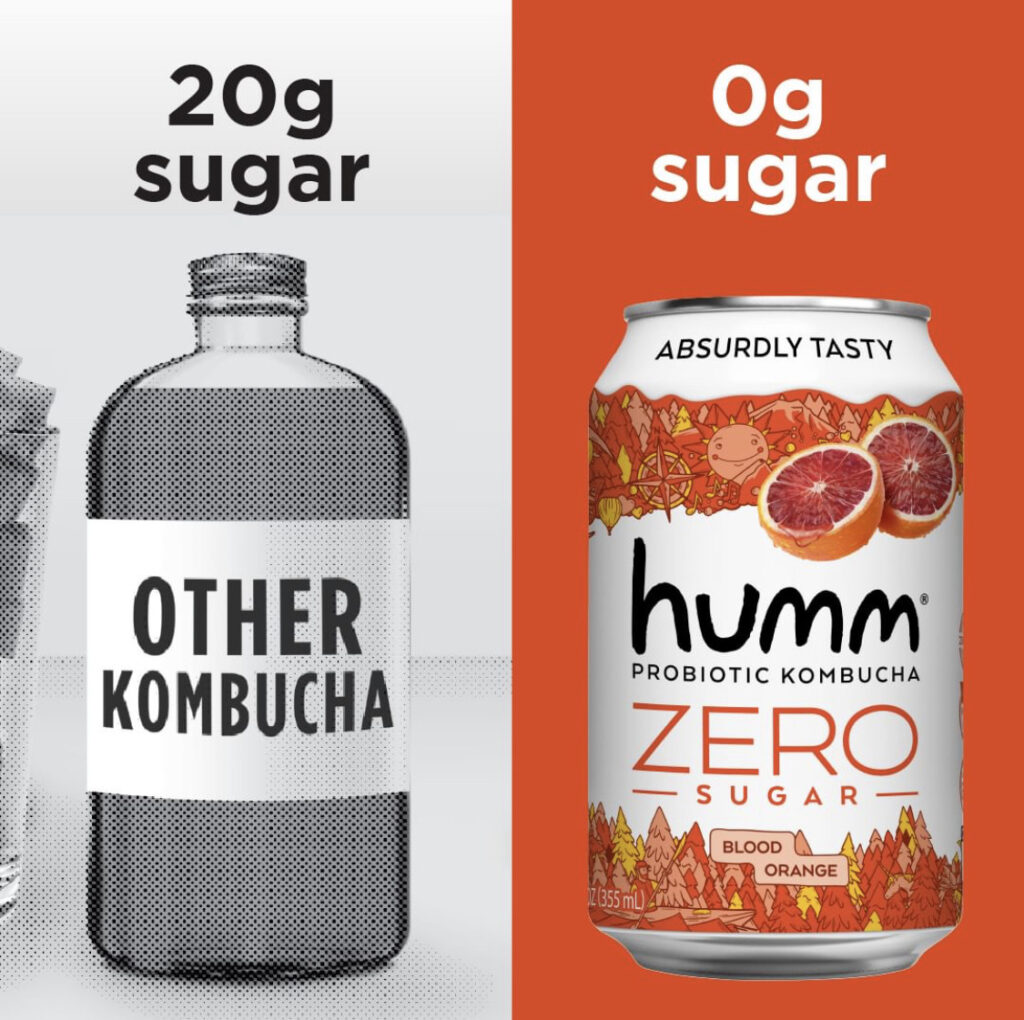
Clarity: People process information quickly, so a clear headline instantly communicates the main benefit of your supplement. The examples above are straightforward, leaving no room for confusion.
Use Emotion and Aspiration: Effective headlines evoke emotions and tap into aspirational desires. Words like “unleash,” “radiant,” and “elevate” trigger positive emotions and encourage users to envision a better version of themselves.
Specificity: Specificity lends credibility. When you mention exact benefits like “boundless energy” or “rapid weight loss,” it creates a sense of tangibility and feasibility.
Problem-Solution Framework: People are more likely to engage with content that promises solutions to their problems. Effective headlines highlight a problem (stress, low energy, excess weight) and introduce the product as the solution.
Create Curiosity and Intrigue: Incorporating elements of curiosity, such as “secret” or “discover,” piques users’ interest, compelling them to learn more about the product.
Use Power Words: Certain words hold persuasive power due to their emotional impact. Words like “unlock,” “melt away,” and “say goodbye” evoke strong imagery and motivation.
Benefit-Oriented: Headlines focusing on benefits rather than features tend to resonate better. People want to know what’s in it for them.
Express The Value Proposition: A headline should encapsulate the core value your product offers. It’s the first impression users have, setting the tone for the rest of the advertisement.
By understanding and applying these principles of marketing psychology, you can create supplement advertisements that not only capture attention but also resonate with your target audience’s desires, emotions, and needs, and get them to buy.
But remember online advertising is constantly evolving.
Embrace change, experiment with new techniques, and stay attuned to shifting consumer preferences.
By staying informed and agile, you can continue to captivate audiences and drive meaningful engagement, ensuring that your supplement advertisements resonate in an ever-changing online environment.
To see what’s working in supplement advertising that includes advanced tactics and strategies not covered in this article click here.
Discover the 3 funnels that can help your health supplement business succeed.
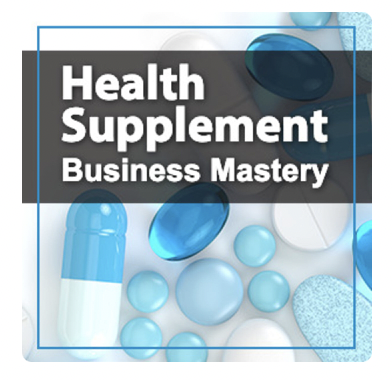
Listen to the Health Supplement Business Mastery Podcast for for dietary supplement entrepreneurs and marketers.
